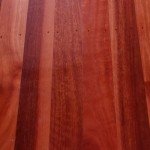By taking the effort to put a timber floor down in your home, you add its unique style to your decor. Unlike tiles, timber flooring brings the character of a naturally grown product. Each timber board is individual, with its own pattern of grain and knots, creating a wonderful piece of art when laid over a floor area.
With so many wood floor options available, choosing the type of timber flooring that meets your needs in wear, cost and looks can be a challenge. Review all the options and make a decision based on your needs.
If you have a pre-war home, the timber floorboards might be milled from softwoods, Kauri pine, Baltic pine, Oregon pine and other pines were commonly used as flooring material. They might even be “shot-edged”, which are square-edged board and butted together. These old boards are more likely to move and certainly let in draughts.
Modern wooden floor boards use a tongue and groove shape to improve the floor’s resistance to movement caused by moisture changes and letting in draughts.
Solid timber floors are lengths of hard wood milled into even-width 19 mm planks with interlocking tongues and grooves. Most commonly, they are laid on bearers and floor joists, but can be laid on a concrete slab if the slab has battens or ply sheets fastened.
The advantages of a solid timber floor are that it can be sanded and refinished time and time again to restore its surface, and there are a wide choice of timbers available. Some of the popular Australian timbers for flooring are Blackbutt, brushbox, Grey or Red Ironbark, Jarrah and Tas Oak. But there are lots of imported timbers available to choose from too. Whether local or imported, solid timber flooring is your best choice if you want truly natural-looking floors.
Floating timber floors are called floating because they are not usually glued or fastened, but free to move as the temperature and humidity varies. They are popular because they are easy and cheap to install, no sanding or finishing is required (this is all done during manufacture) and have unique sound-proofing qualities due to the foam underlay. Made of several layers of timber, with a polished wood veneer on top, floating timber floors can be laid directly over a concrete slab. And unlike solid timber floorboards, which need sanding and finishing on site, floating timber floors do not require sanding, oiling or lacquering.
Floating timber can be glued down to a concrete slab, but this method of installation is not usually advised because it is hard to lift boards if damaged and in need of replacing. And of course, the boards can no longer move. If damaged, good quality floating floors can be sanded and lacquered to restore their finish.
If you are concerned with the hollow sound of floating floors, purchase a special acoustic underlay.
Popular forms of manufactured flooring are bamboo and laminate.
Bamboo flooring’s distinctive style makes a dramatic statement in your home without impacting the environment. Available in packs of planks, bamboo is easy to install and the construction method and finish type make it a hard wearing, great looking flooring option.
Laminate offers you the look and feel of real wood for a fraction of the price. Manufactured with a core of compressed wood fibres covered by a printed layer (the wood pattern) and the protective surface layer, laminate boards are also hard wearing and easy to install. There are a wide range of timber styles to choose from.
Not very common in Australia, parquet floors are constructed from patterned strips of timber that are glued on top of a flat solid floor, such as concrete or a plywood substrate. Parquetry can be bought in patterned panels or tiles, or the tradition method of laying is patterns of individual timber blocks glued in place, sanded and then a finish applied. Laying parquet does require specialist knowledge, so make sure your floor layer has the necessary experience.
While older houses might have a softwood timber floor, most likely a pine species, most Australian flooring timber now is hardwood. Pest resistance, hard wearing, and a wide range of grain patterns and colours have made hardwood the preferred choice for many residential and commercial projects.
While all hardwoods are hard, some are harder than others. Ironbark and spotted gum are tops in hardness, followed by blackbutt and then Tas oak. Installing a harder timber means your floor will resist dent or scratches and retain its great looks longer.
Colours in hardwood range from light blondes like alpine ash, blackbutt and Tas oak, to browns like brushbox and turpentine, and reds like jarrah.
Recycled flooring is available, but its always difficult to source enough timber of similar size and species to complete a room.
New flooring milled from Australian species will be sourced from either state forests or private property. Both of these environments must comply with strict harvesting processes, which protect plant and animal ecosystems, water quality, and cultural heritage. Most sources of timber are now from sustainably-managed forests.
However, the picture for imported flooring is not so clear. If you want to be assured of professional forestry practices its probably best to investigate the source of the timber carefully, or stick with Australian species.
